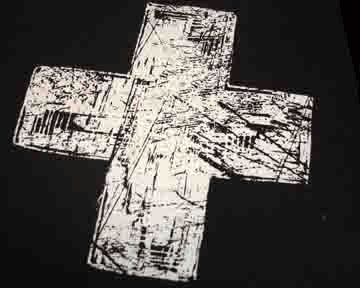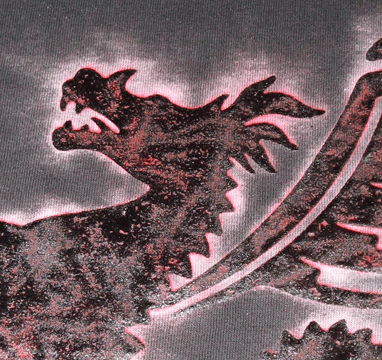 Ed Branigan
Ed Branigan
Another topic we get asked on a regular basis is that concerning discharge. Many printers would like to use it, but have either heard that it is smelly, or complicated to use. Here is Ed Branigan with some insights on discharge:
“Discharge printing is enjoying a resurgence thanks to the trend towards soft hand vintage style t-shirts that’s going on right now. People are still spooked by the discharge process though and the choice to use it seems always to be taken warily. They imagine thick vapors of formaldehyde floating in clouds around their print shops while everyone has to wear a space suit just to get the job done. But things have changed in recent years as far as discharge printing systems go and for the better.
The technology which applies to discharge printing has been around for over 100 years. Discharge, also known as extraction printing because the result of the application is the extraction of the dye from the fabric, was not applicable to garments at first because printed garments needed to be steamed during the curing process which didn’t make it a very attractive option. The development of chemcially reactive discharge made it much easier to use for t-shirt printers because the garment could now be cured in an oven. That still left the formaldehyde.
Discharge has had a reputation for its smell and many printers will offer this by way of an explanation for being wary of using it: “I hear that it has a really bad smell” or “I used to use it but stopped because of the smell “. The short answer is that it does have a smell but thanks to newer developments in discharge ink technology, this smell has been greatly reduced.
The cause of the smell is Zinc Formaldehyde Sulfate (ZFS). ZSF is the discharge agent and is typically added to a clear discharge base at about 5%-6% by weight.
The activated base is printed just like a regular ink. During the curing process the dye in the shirt covered by the printed area is discharged or extracted returning it back to its original cotton color. It is also during the curing stage that formaldehye is released and where the smell comes from. As I mentioned already though, there have been improvements. The formaldehyde content has been greatly reduced and much less is gassed off than used to be. Thanks to the Clean Air Act and other legislation passed in the US in recent decades, stricter controls have been placed on VOC’s (Volatile Organic Compounds) being released into the air from screen printing inks and this has spurred technological advances.
Discharge is no longer the demon that it used to be. While it still requires care with handling and printing, it is by far way easier to manage than previous generations.
While both plastisol and waterbased discharge systems available on the market today the waterbased are more popular.
Waterbased discharge can be tinted using non corrosive pigments or inks to make color. The pigment or ink should be added to the base first and mixed before adding the ZFS. Once mixed it has a shorter shelf life, so be sure to only mix what you need and to follow the instructions.
One last thing to mention: Not every shirt is dischargeable. It is important to test the garment or fabric first. Garment fabric dyes are fickle and don’t always behave themselves. Do a test print. If the discharge doesn’t work, don’t fight it. It’s not going to and you can be sure that every shirt that was dyed in that particular lot won’t work either. So when ordering shirts make sure to ask for dischargeable ones.”
FYI, International Coatings carries a waterbased
discharge system containing of the
3707 Discharge Base and the
3709 Discharge Activator. Our
GEN IV waterbased ink series can also be used to tint the waterbased discharge. The above-mentioned products can be purchased through our distributor network. To find International Coatings distributors in your area, you can go to our distributor locator page
here.
 Discharge on black shirt
Discharge on black shirt
 Tinted discharge
Tinted discharge
 Special Discharge Effect
Special Discharge Effect







